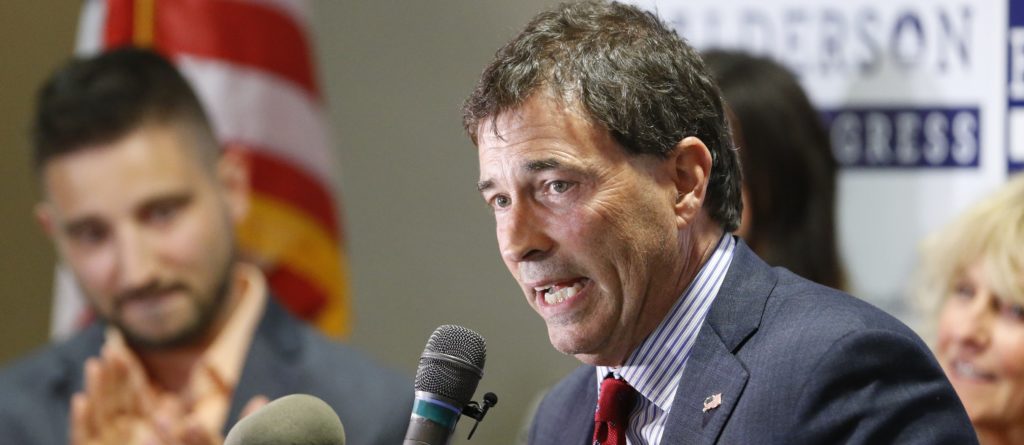
Republican candidates in the nation’s premiere midterm battlegrounds have embraced a central message in their fight to maintain the House majority this fall — and it has little to do with the surging economy or the sweeping tax cuts that the GOP celebrated as a once-in-a-generation achievement just eight months ago.
Instead, as Republicans enter the final month of the primary season, they’re looking ahead to a general-election strategy of embracing anxiety as a tool to motivate voters. That was clear this week as the GOP’s closing message in an Ohio special election questioned Democrat Danny O’Connor’s connection to Nancy Pelosi, the House Democratic leader and preferred super villain for Republicans.
Some Republican strategists are frustrated the party isn’t focused on the tax law or the broader health of the economy in the run-up to Election Day. Others concede that in the Trump era, there’s no better motivator than fear of the other side, particularly the prospect of Pelosi returning to the speaker’s chair. The plan had some success in Ohio: The race was too close to call Wednesday as Republican Troy Balderson maintained a razor-thin advantage over O’Connor, staving off an embarrassing GOP debate for now.
Moving forward, the debate over highlighting the tax law will help determine whether Republicans will maintain control of Capitol Hill after November.
“The tax cuts were for the top … income earners,” said George Stringer, a 58-year-old Democrat who lives in Detroit. “The rich keep getting richer, the poor keep getting poorer.”




